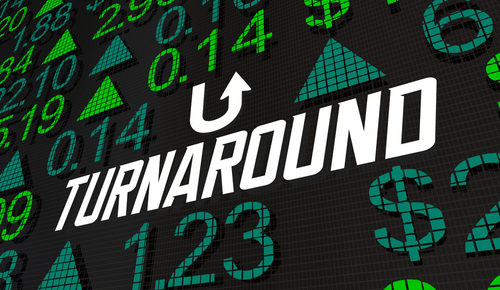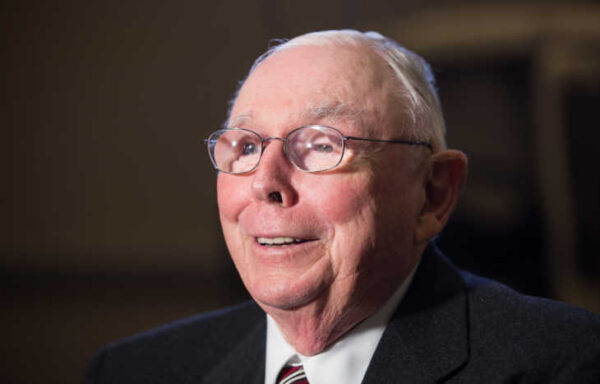The Coronavirus Outlook: Better Than Anticipated
- Experts have used a variety of data models to predict the impact of COVID-19 on global health and wealth.
- But, as Alexander Green explains today, many of those early predictions have been way off.
I keep hearing from readers who think the stock market has lost its mind.
“How can the Dow rally 5,400 points over the last three weeks,” one reader asked, “when the coronavirus and its economic impact are even worse than expected?”
The stock market is a leading indicator. To understand it, you have to look forward, not back.
Second quarter GDP growth is going to be a train wreck, perhaps the biggest economic contraction on record.
But the outlook beyond that is looking better all the time. Yet most investors don’t see it.
After all, we’re in the middle of a global pandemic. Worldwide coronavirus cases have surpassed 1.8 million. The death toll tops 115,000.
With the exception of those who have already gotten ill, no one is immune.
There is no scientifically proven treatment. And a vaccine, according to “the experts,” is 12 to 18 months away.
But here’s what you may not know…
Author and Singularity University Chairman Peter Diamandis estimates that between 100 million and 200 million scientists, technologists, engineers and healthcare workers have taken aim at this pandemic.
They are running tens of thousands of experiments and sharing information with a transparency and speed we’ve never seen before.
Never before have so many researchers in so many countries focused simultaneously on solving a problem… and with such urgency.
They have identified and shared hundreds of viral genome sequences. Online studies have been made available months before publication in academic journals. And hundreds of clinical trials have been launched.
Companies are ratcheting up their efforts to fight the disease with accelerated testing schedules.
Ordinarily, the development of new vaccines and treatments takes years.
But more than two dozen biotechs have announced promising vaccine programs that are rocketing through the early stages of testing.
Government agencies, regulators and nonprofit organizations are working with drugmakers to compress the usual timeline.
(The first coronavirus vaccine by Moderna has been in human trials for over four weeks.)
Diamandis concludes, “As these experiments [bear] fruit and yield data, I have little doubt that we will experience a tsunami of solutions that will disrupt and decimate this pandemic.”
Got that? A tsunami of solutions.
I couldn’t agree more.
Here’s another development that is getting far too little airtime: Estimates of the lethality of COVID-19 are coming down.
Way down.
Two weeks ago, the White House – using a University of Washington model – estimated that, even with social distancing, up to 240,000 Americans could die of COVID-19.
A few days later that same model estimated that deaths over the next four months might be closer to 81,000.
By April 8, the number was reduced to 60,415.
To put this in perspective, that’s about the number of people estimated to have died of the flu in the 2019-2020 season.
Predictions of hospitalization rates have also come down dramatically.
What’s going on?
Models are based on data. If the data is flawed, so are the projections.
And the data was flawed.
We now know that many folks who contract the coronavirus, perhaps as many as half, not only don’t get sick… they don’t show any symptoms.
Some studies estimate that up to 80% of people with the virus are asymptomatic.
Last month, the World Health Organization announced that the mortality rate for the coronavirus was 3.4%. The real number is now less than 1%.
So we have two huge pieces of good news.
The first is that early models massively overstated the fatality of COVID-19.
The second is that the scientific community is working overtime – and at breakneck speed – on effective solutions.
Yeah, I know. The conventional wisdom is that the economy won’t get back to normal until we have a successful treatment and a vaccine.
But the smart money thinks we’ll have a successful treatment in a matter of weeks.
And the vaccine that experts tell us is at least 12 to 18 months away? We should have that before Christmas.
If you’re trying to understand the market’s big bounce after the coronavirus crash, there’s your answer.
There is bound to be plenty of volatility ahead.
But the outlook has moved from “worse than expected” to “better than anticipated.”
About Alexander Green
Alexander Green is the Chief Investment Strategist of The Oxford Club, the world’s largest financial fellowship. For 16 years, Alex worked as an investment advisor, research analyst and portfolio manager on Wall Street. After developing his extensive knowledge and achieving financial independence, he retired at the age of 43.
Since then, he has been living “the second half of his life.” He runs The Oxford Communiqué, one of the most highly regarded publications in the industry. He also operates three fast-paced trading services: The Momentum Alert, The Insider Alert and Oxford Microcap Trader. In addition, he writes for Liberty Through Wealth, a free daily e-letter focused on financial freedom.
Alex is also the author of four New York Times bestselling books: The Gone Fishin’ Portfolio: Get Wise, Get Wealthy… and Get On With Your Life; The Secret of Shelter Island: Money and What Matters; Beyond Wealth: The Road Map to a Rich Life; and An Embarrassment of Riches: Tapping Into the World’s Greatest Legacy of Wealth.






